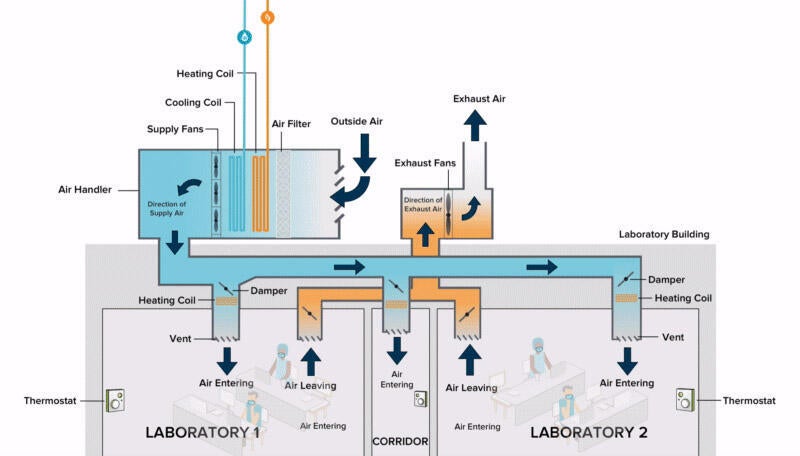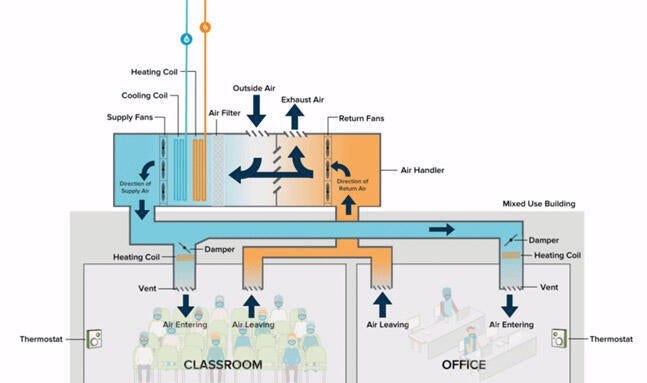“It smells like someone’s having a BBQ...”
Indoor air will commonly smell of smoke during a wildfire event, but when tested will be consistently better (i.e. containing lower particulate matter) than being outdoors. Most buildings contain MERV-rated filters that reduce harmful particulate pollution but do not have the capability to eliminate odors.
Facilities Management During a Wildfire
Facilities Management is responsible for maintaining air-conditioning and ventilation systems throughout the year. Their teams actively monitor HVAC performance on hot and smoky days. Air filters are replaced on a schedule throughout the year, but Facilities Management monitors the filters during and after a prolonged smoke event and changes them as needed.
Building HVAC Systems
Laboratory Spaces
HVAC systems serving laboratory spaces supply 100% outside air, meaning no air exhausted from a lab space is recirculated back into the system – it is all exhausted outside the building.

Non-Laboratory Spaces
HVAC systems serving other types of spaces, such as office, classroom and community spaces, have different ventilation requirements. Systems serving non-laboratory spaces are designed to bring in the minimum amount of outside air required for the design occupancy of the space and mix it with return air from the spaces. Most systems are also designed to bring in more outside air (up to 100%) when outdoor conditions are favorable (i.e. not too hot or cold). This mixed air is then filtered at the central unit before being supplied back to the space.

Buildings Without Mechanical Ventilation Filtration Systems
Some campus buildings and housing facilities do not have mechanical ventilation filtration systems. There are a number of ways to reduce smoke exposure in buildings or homes without ventilation and filtration:
- Stay inside with windows and doors closed.
- Create a “clean room” – use a CARB-certified portable HEPA air purifier properly sized for your space. Do not add to indoor pollution. Do not burn candles or use gas, propane, woodburning stoves, fireplaces, aerosol sprays, fry or broil meat or smoke tobacco products. All of these can increase air pollution indoors.
- Long-term smoke events usually have periods when the air is better. When air quality improves, even temporarily, air out your space to reduce indoor air pollution and step outside when you have a chance.
- Seek shelter elsewhere if it is too warm to stay inside with the windows closed.
Outdoor workers and employees in campus buildings without mechanical ventilation filtration systems should review the Wildfire Smoke Protection training on Worksafe. N95 respirators should be used when the air quality index is unhealthy outdoors (AQI >150).
If you are unsure if a building has mechanical ventilation, or have additional questions, you can reach out to the industrial hygiene team at Indhyg@ehs.ucla.edu for more information.




